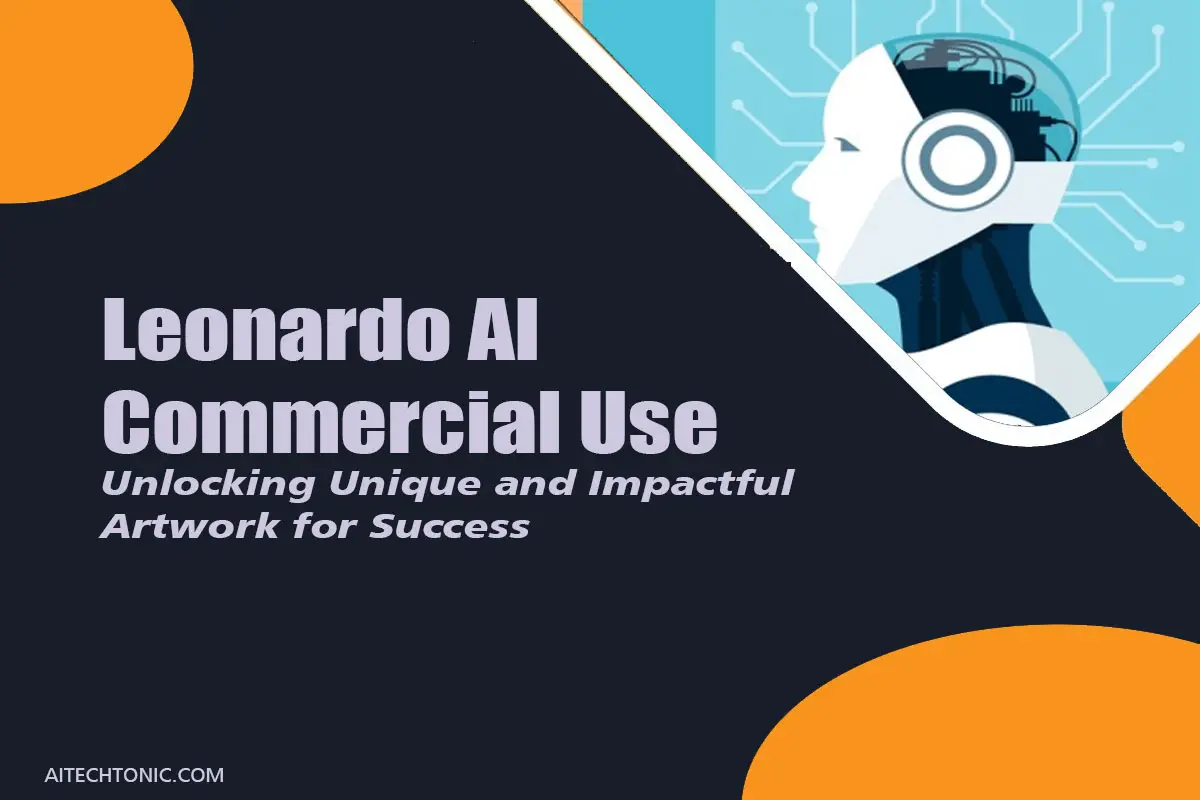In today’s digital era, artificial intelligence (AI) has revolutionized various industries, including the realm of art and design. A notable AI platform, Leonardo AI, has gained significant acclaim for its remarkable ability to generate exceptional and high-quality artwork. Many artists and businesses are curious about the viability of using Leonardo AI-generated images for commercial purposes. This article delves into the topic of Leonardo AI commercial use, offering valuable insights into the advantages, limitations, and legal considerations associated with incorporating AI-generated artwork into commercial projects.
Benefits of Using Leonardo AI for Commercial Purposes
Creating Unique and Captivating Artwork
Leonardo AI empowers businesses to swiftly and effortlessly create distinctive and captivating artwork. The platform’s advanced AI algorithms generate production-ready assets suitable for various projects, including commercial ventures. This capability enables businesses to establish a distinctive and impactful brand image, setting them apart from their competitors.
Staying Ahead of the Competition
In today’s highly competitive market, businesses must find innovative ways to stand out. By leveraging Leonardo’s AI-generated artwork, companies can create visually arresting visuals that capture attention and leave a lasting impression on their audience. These AI-powered creations offer a fresh perspective, allowing businesses to remain one step ahead of the competition by delivering visually stunning and engaging content.
Accelerating the Creative Process and Maintaining Consistency
A significant advantage of utilizing Leonardo AI for commercial purposes is the expedited creative process. AI-generated artwork reduces the time-consuming manual tasks involved in creating visual assets, enabling artists to focus more on the creative aspects of their work. Additionally, the platform ensures consistency in style across different projects, thereby maintaining a cohesive visual identity for businesses.
Greater Control over Asset Generation
Leonardo AI bestows artists and designers with enhanced control over asset generation. The platform allows users to customize various parameters such as color palettes, styles, and themes, ensuring that the AI-generated artwork aligns precisely with their creative vision. This level of control empowers artists to produce artwork that authentically represents their brand and meets their specific requirements.
Read Also: Leonardo AI vs Midjourney
Drawbacks and Concerns of AI-Generated Artwork
Lack of Personal Touch
While AI-generated artwork offers speed and efficiency, one potential drawback lies in the perceived absence of a “personal” touch. Since AI algorithms produce artwork without human input, some viewers may feel a disconnect or find it challenging to emotionally connect with AI-generated visuals. This limitation assumes particular importance for projects that demand a more personalized and human touch.
Overreliance on AI-Generated Artwork
As AI-generated artwork gains popularity, there is a risk of overreliance on such assets. While the prospect of rapid and effortless creation is enticing, some artists express concerns about the quality and originality of AI-generated output. Striking a balance between utilizing AI-generated artwork and incorporating human creativity and expertise ensures a well-rounded and authentic creative process.
Legal Considerations for Commercial Use of AI-Generated Artwork
Copyright Risks and Fair Use
Using AI-generated images for commercial purposes carries legal risks. In the event of a copyright dispute involving an AI-generated image, the legal burden may fall on the end user. It is crucial to ensure that AI-generated artwork does not infringe upon existing copyrights. Furthermore, artwork that bears resemblance to protected works, such as Disney characters or logos, must exhibit transformative characteristics to receive legal protection. Fair use can serve as a legal defense in copyright disputes, exempting works that qualify from being considered copyright infringements.
Attribution and Rights Management
When utilizing AI-generated artwork for commercial purposes, it is essential to address attribution and rights management. Some AI platforms, including Leonardo AI, impose specific guidelines regarding the use and attribution of AI-generated content. It is crucial to understand and adhere to these guidelines to ensure compliance with the platform’s terms of service and any applicable licensing requirements.
Model Training and Data Usage
AI algorithms employed by platforms like Leonardo AI undergo training using vast amounts of data, including images from various sources. Being aware of the data used to train the AI models and any associated usage restrictions is crucial. Depending on the platform, limitations may exist on using AI-generated artwork for certain project types or industries. Understanding the licensing and usage rights pertaining to the AI models helps mitigate legal risks.
Contractual Agreements and Licensing
Before incorporating AI-generated artwork into commercial projects, it is advisable to have a clear understanding of the licensing terms and contractual agreements associated with the AI platform. Some platforms may require users to enter specific licensing agreements or obtain additional permissions for commercial use. Consulting legal professionals and reviewing the terms and conditions of the AI platform ensures compliance and mitigates legal risks.
Ethical Considerations
In addition to legal considerations, ethical implications arise when using AI-generated artwork for commercial purposes. Concerns include issues of originality, authenticity, and the potential displacement of human artists. Businesses must adopt transparency regarding the use of AI-generated content and consider the impact on the broader artistic community. Engaging in responsible and ethical practices fosters a positive relationship between AI-generated artwork and human creativity.
Conclusion
Utilizing AI-generated artwork, such as the one produced by Leonardo AI, for commercial purposes offers numerous benefits, including the ability to create unique and captivating visuals, stay ahead of the competition, accelerate the creative process, and maintain consistency. However, it is crucial to consider the limitations, legal considerations, and ethical implications associated with incorporating AI-generated content.
By understanding copyright risks, adhering to licensing agreements, and promoting transparency in the use of AI-generated artwork, businesses can harness the power of AI to enhance their creative endeavors. This approach ensures legal compliance and fosters responsible artistic practices, ultimately nurturing a harmonious relationship between AI-generated artwork and human creativity.

